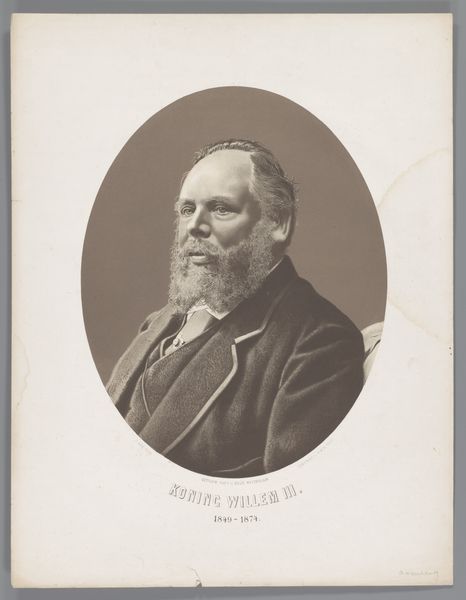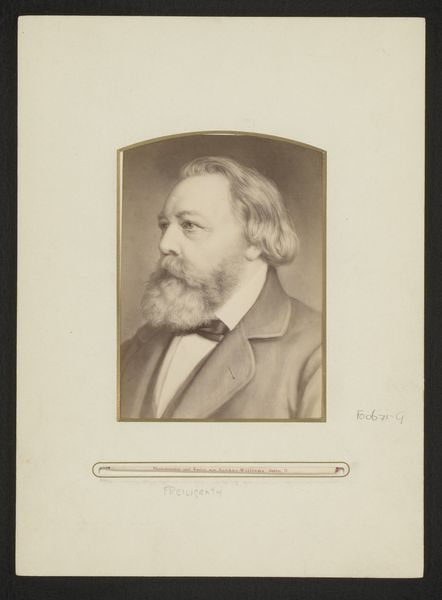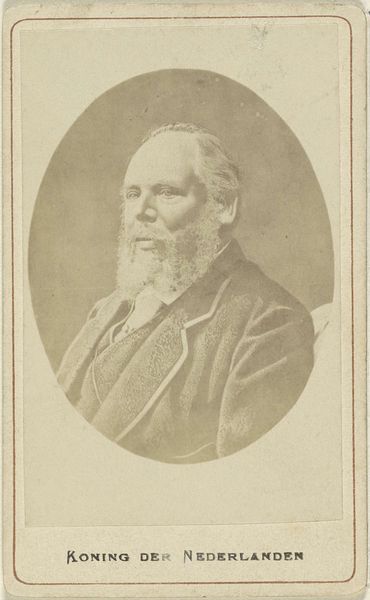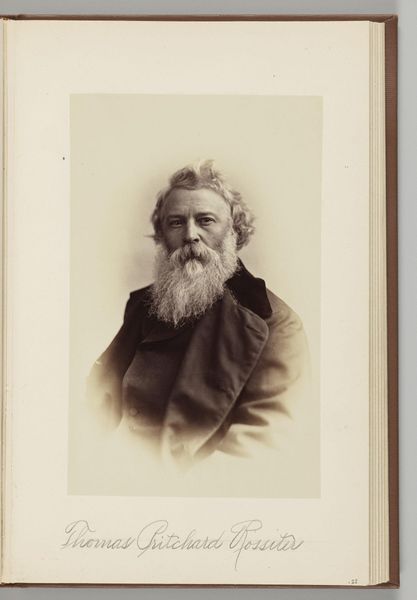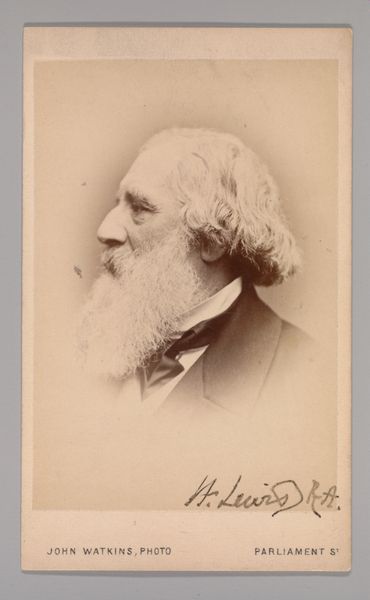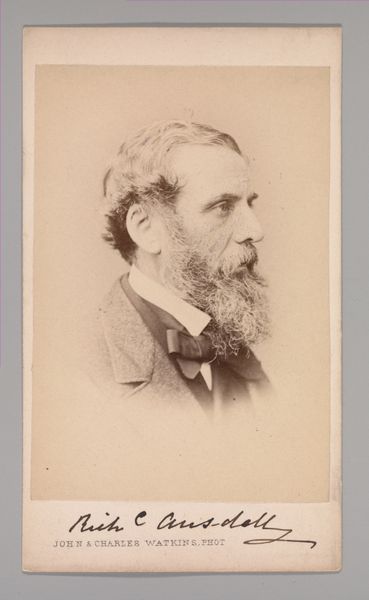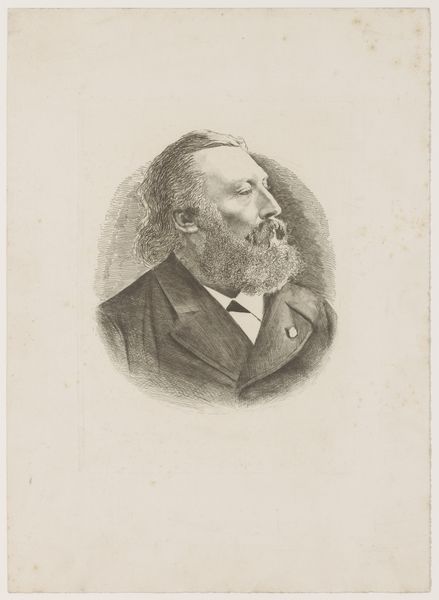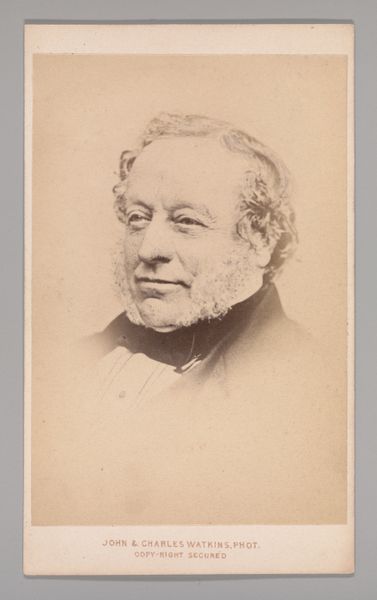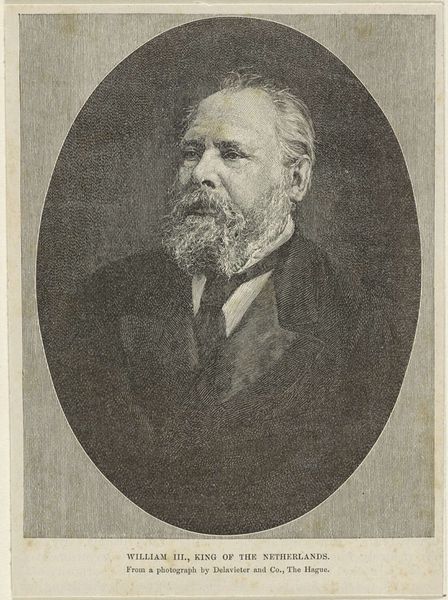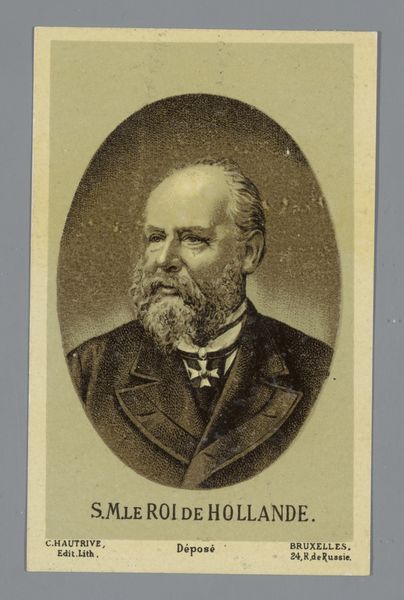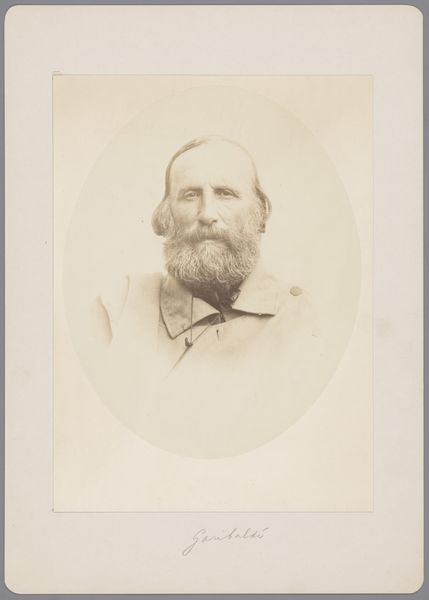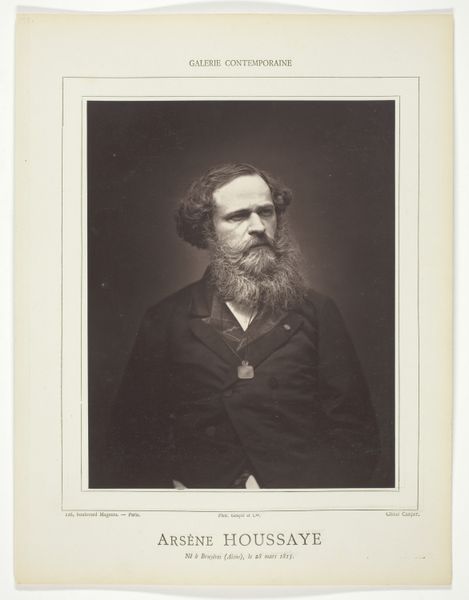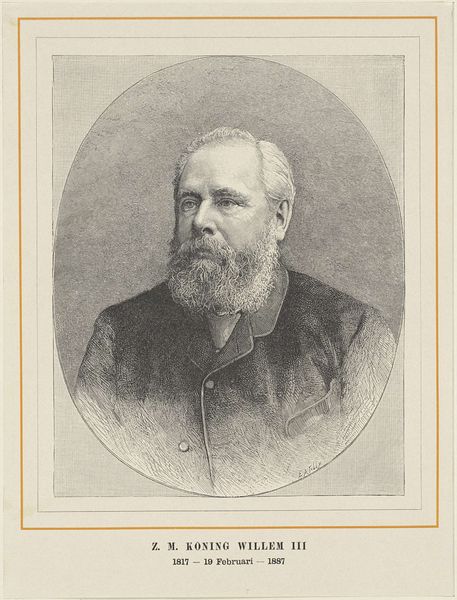
photography
#
portrait
#
photography
#
19th century
#
realism
Dimensions: height 650 mm, width 503 mm
Copyright: Rijks Museum: Open Domain
Curator: It's hard not to be immediately struck by the formality and weight of this photographic portrait. The sepia tones lend a historical distance, don’t you think? Editor: Absolutely. It has that imposing air of 19th-century portraits, certainly. Let's unpack it. This is a portrait of Willem III of the Netherlands, created sometime between 1874 and 1876. It’s held here at the Rijksmuseum, a perfect setting, I think, given its historical import. Curator: From my perspective, what’s really captivating is thinking about the materiality of a photograph like this from that period. We’re so used to instant images today. Consider the equipment, the chemicals, the sheer amount of time it would take to produce such a thing! Each photograph was an intensive labor, creating what amounts to a singular, almost precious object. Editor: And think about the social ritual surrounding it! A king wouldn’t just casually pose. The sitting itself becomes a performance, a reinforcement of power through carefully constructed imagery. Note how his gaze seems averted yet simultaneously dignified; the implicit message is control and strength. We could even investigate what studio was contracted, who the photographer was and their access to the Royal court. Curator: Exactly! And how the production of these images quickly industrialized through studios catering to a rising bourgeois class! One thing that gets less discussion is how this artwork complicates established norms. You had a powerful figure represented in, back then, a new medium. The photograph could be endlessly reproduced as a kind of propaganda, while being hand-touched as a crafted object. It exists within boundaries! Editor: Right. The politics of imagery! We cannot ignore the symbolic work this photograph performed in solidifying the monarchy's image for the people, playing its crucial part in a time of rapid social change. It uses the realism offered by early photography as a means to solidify traditional ideals in the face of revolution. Curator: It certainly provokes a meditation on labor, industrial production, and photography, something often elided in art criticism when dealing with more "painterly" mediums. Editor: Thinking about the museum context helps one better understand its public life too. Willem III appears within and reinforces national history itself through these walls. Curator: An engaging artwork to deconstruct! Editor: Indeed, a striking intersection of history, power, and early photographic techniques.
Comments
No comments
Be the first to comment and join the conversation on the ultimate creative platform.
